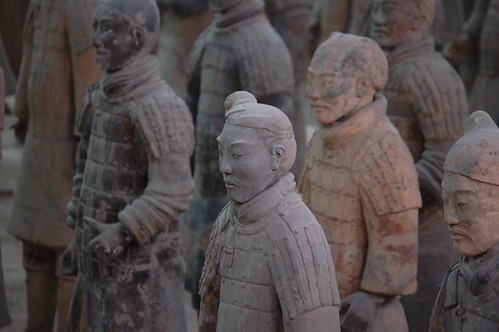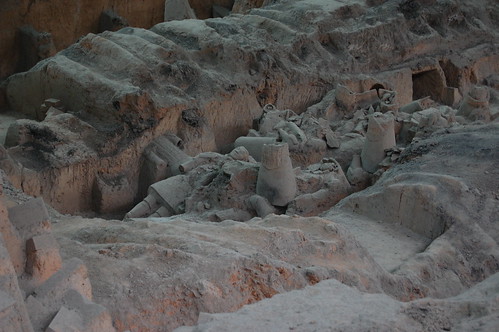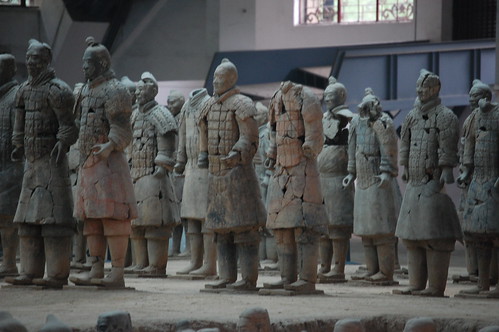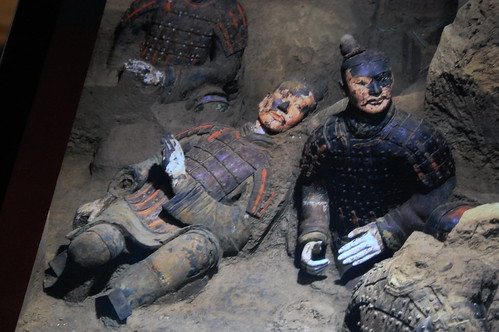This is one of those great archeological stories: back in 1974, a farmer near Xi’an was digging a well and found the shattered remains of some life-sized terracotta statues. Word quickly spread, archeologists got busy, and one of the biggest tourist attractions in China was born.
You can read the whole story online, but here’s the short version:
The first emperor of China, Qin Shi Huang, had plans to rule in the afterlife just as he had in this world. After being persuaded that plans to bury his actual army with him would be bad for morale, he ordered the construction of this clay army.
And what an army it is – archeologists estimate that there are over 8,000 soldiers in total, only a fraction of which have been uncovered so far. The detail and workmanship are incredible, and no two are exactly alike.
Unfortunately, the site was looted and burned just 5 years after the emperor’s death, and nearly all of the statues were smashed.
The hundreds of intact statues on display now have all been painstakingly re-assembled, and you can see some of the work in progress.
The figures were all painted in life-like color, but the 2,000 year-old paint quickly oxidizes away on contact with the air. That’s one of the reasons so much of the site hasn’t been excavated yet – they’re hoping to find a way to preserve the paint.
Personally, I think they look cooler & more supernatural without it.
The thing that struck me the most, though (besides the elbows and cameras of all the Chinese tourists), was the vast amount of effort it must have taken to create all this. By some historical accounts, the construction took over 700,000 men and nearly 40 years to complete.
I thought about this at the Great Wall, too: it’s amazing what can be accomplished when one person can force hundreds of thousands of others to work themselves to death on a project over a period of decades.
Kinda reminds me of the advertising biz. 














{ 6 comments }
Really interesting – I had never heard about these statues. I always hated history in school so when I began traveling a little, I became interested in all kinds of historical places I visited. After I got home I researched the place I had visited and learned all kinds of things. Two places that come to mind are the Tower of London and Kalaupapa, Molokai, Hawaii (the leper colony and the work of Father Damien).
That is an incredible amount of work for an emperor to have done by others so HE could rule again later!
Thank you for giving the summary, I always like to read the history behind the photos of ruins and old civilisations. This is an amazing story and it makes you wonder how will we be portrayed after hundreds of year from now.
I agree, they look more intriguing to me without the paint as well. Gives them more of an ancient mystery feel.
Thanks for the great photo story!
We watched a short video about their making and history. It showed what they looked like all painted up. I thought it made them look cartoon-y and not fierce at all.
Don’t forget he walled up 100’s of the architects and workers with the clay soldiers so they would not be able to tell others how to get in! (not that it helped much but really!)
Comments on this entry are closed.